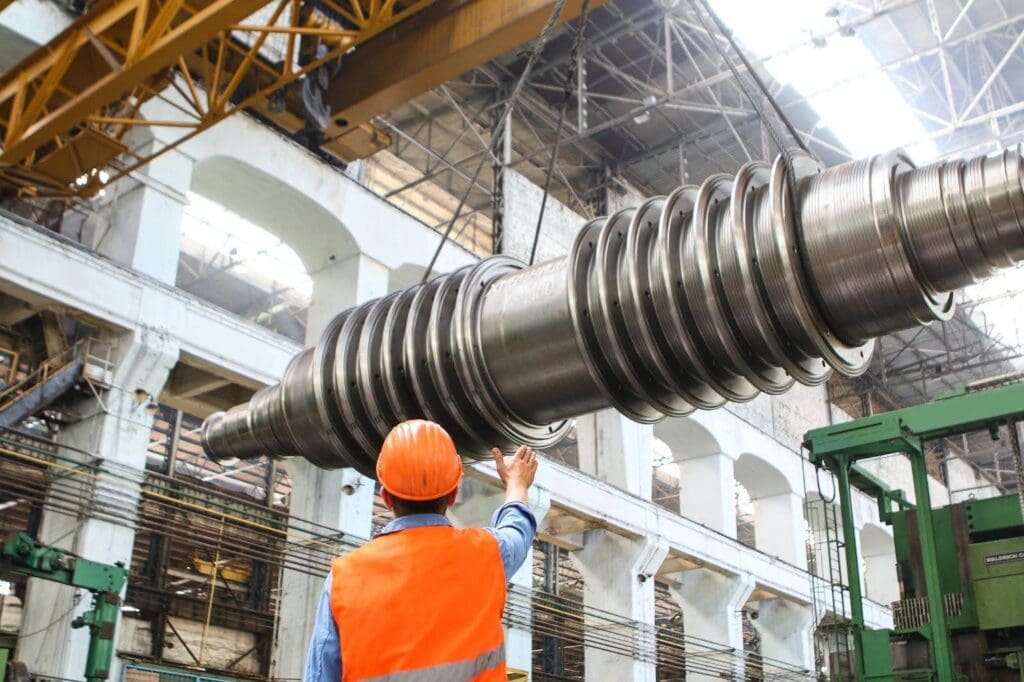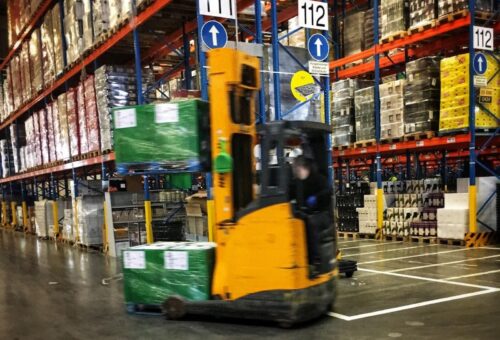Lean Supply Chain: Definition, Advantages, and Disadvantages

In today’s highly competitive business environment, a lean supply chain is more than just a strategy; it’s necessary for companies looking to enhance efficiency and customer value.
By employing lean principles that originated from the Toyota Production System, businesses across various sectors are streamlining their supply chains to reduce waste, improve customer satisfaction, and gain a competitive advantage.
This approach to supply chain management supports eliminating waste in the manufacturing process. It ensures that end customers receive exactly what they need, thus maximizing customer value and reducing associated costs.
Lean Supply Chain Management
Lean supply chain management is a strategic approach focused on streamlining operations, eliminating waste, and delivering value to the end customer. Organizations implementing lean principles and tools can optimize their supply chain, respond swiftly to customer demand, and maintain a competitive edge in their respective industries.
By prioritizing efficiency and customer satisfaction, businesses can reduce operational costs, enhance product quality, and improve service delivery. This methodology drives profitability and fosters sustainable business practices, ensuring long-term success in an ever-evolving market landscape.
Understanding the Role of a Supply Chain
The role of the supply chain is paramount in any business, serving as the lifeblood that connects manufacturing to sales and, ultimately, to customer satisfaction.
It encompasses every step taken to move a product from sourcing raw materials to delivering the finished goods to the customer, significantly impacting the company’s costs, efficiency, and ability to meet demand.
A lean supply chain adopts a systematic approach to refine this journey, focusing on value stream mapping to identify and eliminate waste. This ensures a more efficient, low-cost operation that responds quickly to customer needs.
Warehousing
In the context of a lean supply chain, warehousing plays a significant role in reducing inventory levels and wasted resources. By implementing lean principles, businesses can minimize inventory, reducing storage costs and lead times.
For example, a furniture manufacturer may use lean warehousing techniques to have just enough stock to fulfill current orders rather than large quantities that may take time to fulfill existing orders.
Transportation
Transportation is another critical element in a lean supply chain, focusing on optimizing logistics to reduce costs and non-value-added time.
By analyzing the transportation process through value stream mapping, companies can identify inefficiencies and implement more direct routes or consolidate shipments to save time and fuel.
For instance, an electronics distributor could arrange full truckload shipments instead of less-than-truckload to maximize the utility of their shipping and reduce lead times.
Repeat Customers
Maintaining a lean supply chain also significantly impacts securing repeat customers. Efficient supply chains that deliver products on time and as expected can create satisfied customers and foster mutually respectful relationships.
In retail, for example, a lean supply chain ensures that popular items are always in stock, encouraging customers to return knowing they can always find what they need.
The Undisputed Benefits of Lean Supply Chain

Adopting a lean supply chain approach doesn’t just streamline operations; it strategically positions a business to enhance profitability and responsiveness.
Boost Profits
A lean approach significantly cuts costs and improves the bottom line by focusing on eliminating unevenness in the supply chain and reducing waste.
For instance, a manufacturing company that adopts lean manufacturing can reduce the amount of raw materials and inventory it holds, which translates to lower storage and capital costs. This, coupled with a poor purchasing strategy that reduces the cost of goods by negotiating better supplier terms, can positively affect overall profits.
Reduce Waste
Reducing waste is crucial for optimizing operations and inventory management in a lean supply chain. This extends beyond physical destruction to include time and processes that don’t add value to the end customer.
For example, a food processor might implement lean supply chain solutions that minimize raw material wastage through just-in-time inventory practices, significantly lowering spoilage and associated costs.
Manufacturing
Lean manufacturing is a transformative approach within the supply chain that seeks to optimize the manufacturing process, reduce waste, and respond faster to customer demand.
An instance is the automotive industry, where lean principles guide the assembly line to reduce non-utilized talent and excess production, ensuring that every step adds value and nothing is created without a purpose.
Streamline Your Processes
Streamlining processes is a fundamental aspect of lean supply chain management. Companies can enhance efficiency and adaptability by simplifying logistics and removing unnecessary procedures.
A practical industry example is a retailer that uses lean supply chain strategies to optimize distribution centers, reducing the time from warehouse to sales and decreasing inventory levels and costs.
Customer Satisfaction
At the heart of a lean supply chain is increasing customer satisfaction by delivering products more efficiently and reliably. Poor supply chain management can lead to fewer returns and higher customer loyalty.
In the electronics sector, where product life cycles are short, a thin supply chain enables quicker response times to market changes, ensuring customers can access the latest products without delay.
Dangers of Overextending Lean Supply Chain
Cutting a supply chain too lean can sometimes backfire, leading to a lack of redundancy and flexibility to respond to fluctuations in customer demand or supply chain disruptions.
While a tightly controlled inventory and just-in-time manufacturing can reduce costs, they can also leave a company vulnerable if any link in the supply chain fails.
The disadvantages include potential delays, stockouts, and an inability to cope with sudden spikes in demand. However, in stable environments with predictable demand, a highly lean supply chain can work effectively.
The Impact of Supply Chain Management on Lean Supply Chain

Supply Chain Management (SCM) is pivotal in creating and maintaining a lean supply chain. The discipline of SCM orchestrates and aligns all elements of the supply chain to abide by lean principles, eliminating waste and adding value at every step.
This synergy ensures management initiatives focus on creating a flow that meets customer needs with minimal resources, fostering an efficient supply chain that benefits the company and customers.
Pros
- Streamlined supply chain processes reduce inventory levels and wasted resources.
- It has enhanced customer satisfaction due to faster delivery and higher product quality.
- It improved cost efficiency by eliminating non-value-adding activities.
- It increased flexibility and adaptability in responding to customer demands and market changes.
- Better inventory management leads to less inventory and reduced holding costs.
- Lean supply chain management can lead to more satisfied customers and repeat business.
- Continuous improvement practices lead to ongoing enhancements in supply chain performance.
Cons
- Over-lean systems may lack the buffer necessary to absorb supply chain shocks.
- There’s a potential for overemphasis on cost-cutting at the expense of quality or reliability.
- A highly lean system can be vulnerable to unexpected spikes in customer demand or supply interruptions.
- Continuous pressure to eliminate waste might lead to worker burnout or decreased morale.
Capitalizing on Lean Supply Chain Management Tools and Technology
Incorporating cutting-edge software and technology has significantly enhanced lean supply chain strategies, providing the tools for meticulous supply chain planning and waste reduction.
Supply chain management software offers comprehensive inventory planning, demand forecasting, and real-time analytics, enabling businesses to make informed decisions quickly. Technologies such as RFID and IoT provide unparalleled visibility into the supply chain, further streamlining operations and reducing excess.
However, the risks involved include the potential for over-reliance on technology, which can lead to vulnerabilities if systems fail, and the initial cost and complexity of implementing these technologies can be significant.
The Power of Software
Integrating software in managing a lean supply chain brings a transformative capability to the entire process. With advanced analytics and machine learning, software systems can predict trends, automate inventory management, and create a responsive supply chain.
They provide real-time data that helps make quick and accurate decisions, such as adjusting inventory levels based on customer demand forecasts. Moreover, software facilitates better communication between supply chain partners, ensuring that every link in the chain is informed and synchronized.
For instance, supply chain management software in the automotive industry can streamline parts procurement, align production schedules, and reduce lead times while maintaining the lean philosophy of minimizing excess and focusing on customer value.
This digital empowerment supports operational goals and drives strategic initiatives, positioning businesses at the forefront of supply chain innovation.
FAQs
Discover critical insights with these frequently asked questions about a lean supply chain, providing a deeper understanding of its application and benefits in the business world.
What is an example of a lean supply chain?
An example of a lean supply chain is Toyota’s production system, which focuses on just-in-time inventory and continuous improvement.
What is a lean and agile supply chain?
A lean and agile supply chain combines efficiency and waste reduction with the flexibility to respond rapidly to changing market demands.
How do you build a lean supply chain?
Build a lean supply chain by implementing just-in-time production, reducing inventory levels, and continuously analyzing and improving processes.
What is the lean Six Sigma supply chain strategy?
The lean Six Sigma supply chain strategy merges lean manufacturing principles with Six Sigma quality control to enhance efficiency and eliminate defects.
